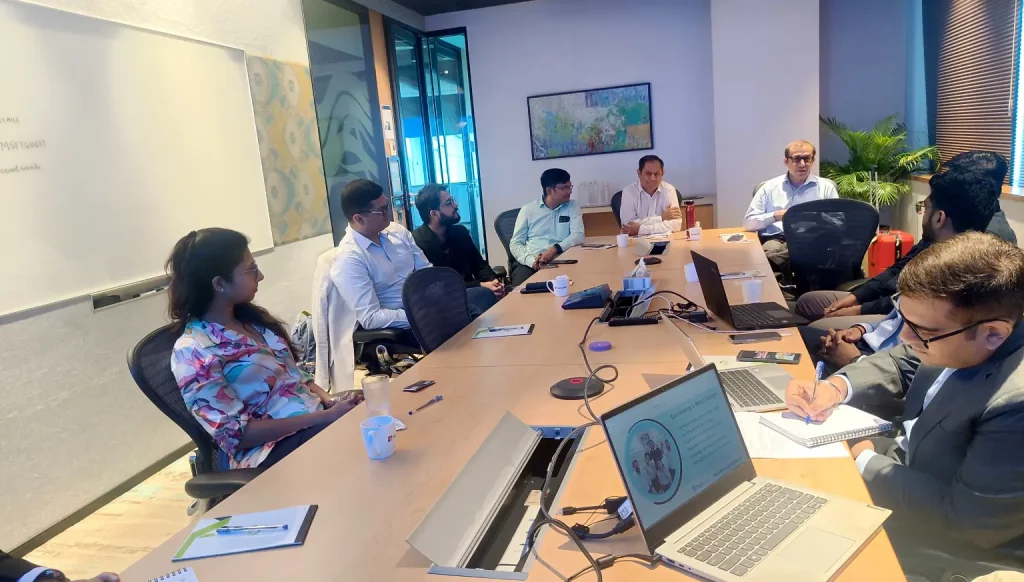Table of Contents
Toggle
At a recent roundtable organized by FieldAssist in Mumbai, in association with Microsoft and moderated by industry experts from Deloitte, industry leaders shared views on best practices for digital transformation.
Gone are the days when technology was deployed to merely solve problems. The unique challenges of the 21st century, especially in the FMCG industry, require technology to be used not just to solve business problems but drive the business forward. To enable the business rather than just keep its lights on.
For far too long, and for far too many companies, technology has been seen as a point solution to a point problem. A problem is encountered, consultants are hired, proposals are read and written, a piece of technology is sought and deployed, and attempts are made to solve the problem. That’s it.
Today, it’s a different world. The above approach is not only incomplete, not only undesirable, but also unaffordable. No organization can afford to not utilize technology to achieve a full-fledged transformation of the business. The CPG industry faces particularly acute challenges. Long supply chains and changing consumer habits can lead to an ever-evolving environment that is best described as “thriving in chaos”. Technology can be a great enabler in managing this chaos.
Gone are the days when technology was deployed to merely solve problems. The unique challenges of the 21st century, especially in the FMCG industry, require technology to be used not just to solve business problems but drive the business forward. To enable the business rather than just keep its lights on.
For far too long, and for far too many companies, technology has been seen as a point solution to a point problem. A problem is encountered, consultants are hired, proposals are read and written, a piece of technology is sought and deployed, and attempts are made to solve the problem. That’s it.
Today, it’s a different world. The above approach is not only incomplete, not only undesirable, but also unaffordable. No organization can afford to not utilize technology to achieve a full-fledged transformation of the business. The CPG industry faces particularly acute challenges. Long supply chains and changing consumer habits can lead to an ever-evolving environment that is best described as “thriving in chaos”. Technology can be a great enabler in managing this chaos.

The following points are critical to this framework and thought process:
- The perfect is the enemy of the good: It is tempting to assume that technology transformation requires a disruptive, all-encompassing change or a complete overhaul. This is understandable, given the transformative power of technology itself. Yet, especially for large organizations running complex business processes, incremental change, driven by a deep understanding of the business and executed on the ground, delivers superior results. A calibrated approach, guided by nuanced knowledge of the industry from your technology partners, facilitates rapid scaling while minimizing disruptions.
The comparison should be with your environment before the technology was deployed and used, not to some hypothetical version of how it could be or should be used. Success criteria should not be so rigid that it does not accommodate common hurdles and challenges. - From the ground up: It is imperative to involve end-users and stakeholders from the onset, and not just as an afterthought. Co-creating with the team is paramount to solving their problems and fulfilling their aspirations.
Involving end-users (distributors, territory managers, and others) and key stakeholders during the initial phase of the project, and co-creating with the team is paramount in solving their problems and fulfilling their aspirations. The view of Himjal Pradipkumar, National Sales Head at Ebutor, of “Defining deliverables early” was crucial, as change management is not the responsibility of one department alone.
Read our case study on how India’s biggest snack company implemented DMS and SFA at scale (with over 90% adoption in just a few months) in India’s tier two and three markets. - Human touch vs human intervention: Every technology-led transformation project has a missing touch with people on the front-line. Many have managers or representatives (or consultants) doing more of the talking. As Kamal Lambaa, National Sales Development & Trade Marketing Manager at Deoleo put it, ” Every line manager is HR,” emphasizing the importance of correct sensitization and communication. Everyone nodded in agreement when Deepak Verma, Sales Head at Deoleo said, “Things only flow from top to bottom, and any transformation is incomplete without the human touch.”
- Clear and consistent communication: Clear communication and stakeholder involvement is crucial for successful transformations. Neglecting them can lead to not just the failure of the project but also a heavy price to be paid. A astute statement by Kajal Bhaumik, Senior Sales Automation Manager at Nivea India summed up sentiments: “Cutting the clutter, making everyone see the priority,” which is key to turning tables and obtaining desired outcomes through such initiatives.
- Gamification and beneficiary buy-in:How to make sales people want to change their behaviors and habits? How to get their buy-in for critical transformation projects? How to execute proper change management techniques for the usage of the new technology? Am I creating enough incentives for people to disrupt their older workflows and adopt new ones? How do I ensure that the technology is adapted to existing business processes and not the other way round? These are key questions that need to be addressed before embarking on technology-led transformation.

About Post Author
Chitransh Jain
A problem solver at his core, Chitransh is best at identifying strategic opportunities and executing action plans with great attention to detail. His eagerness to take up challenging tasks while upskilling continuously allows him to deliver impactful results.


